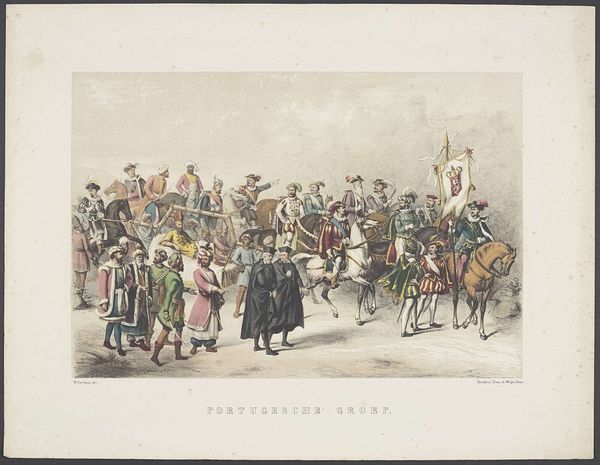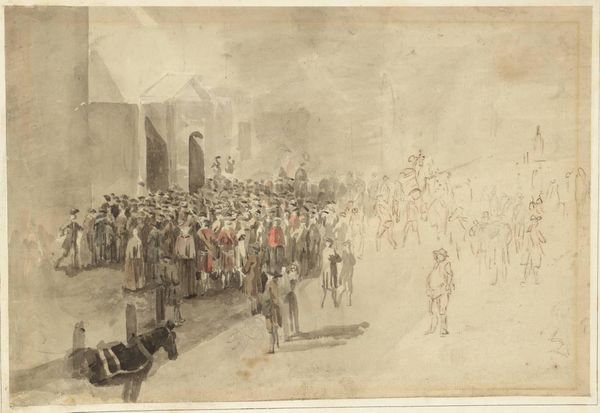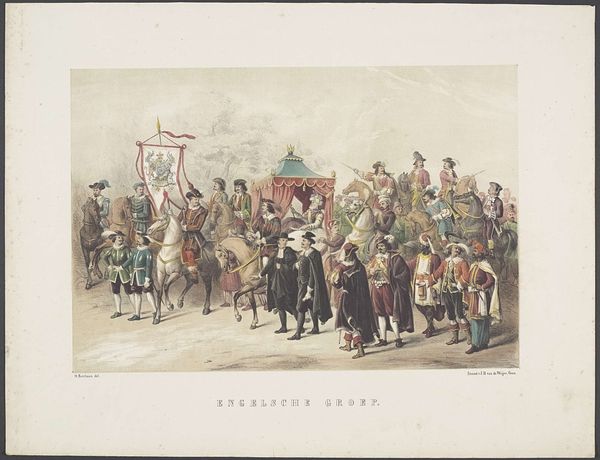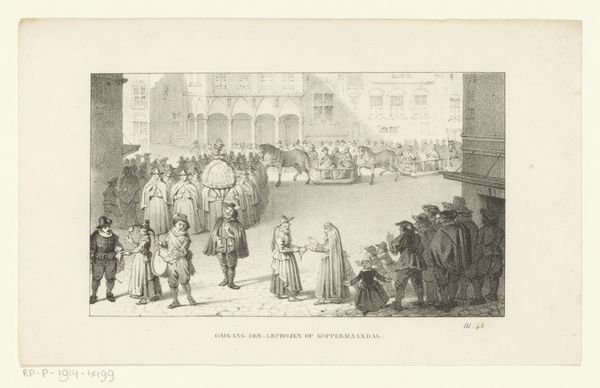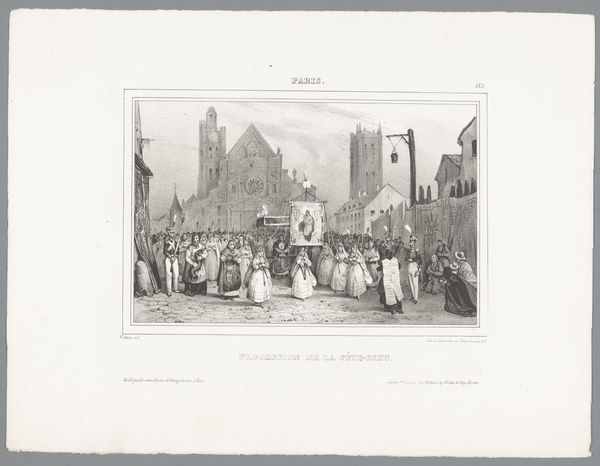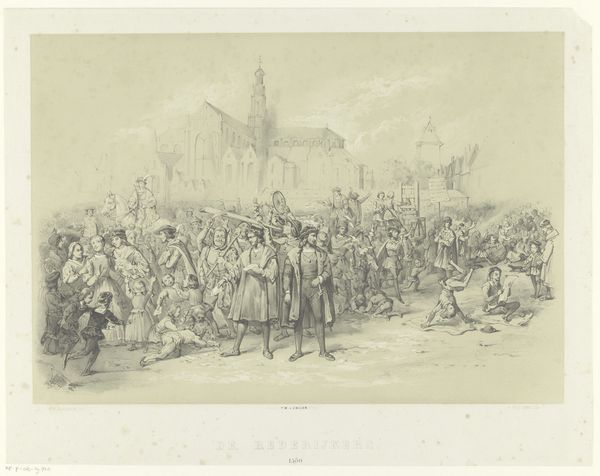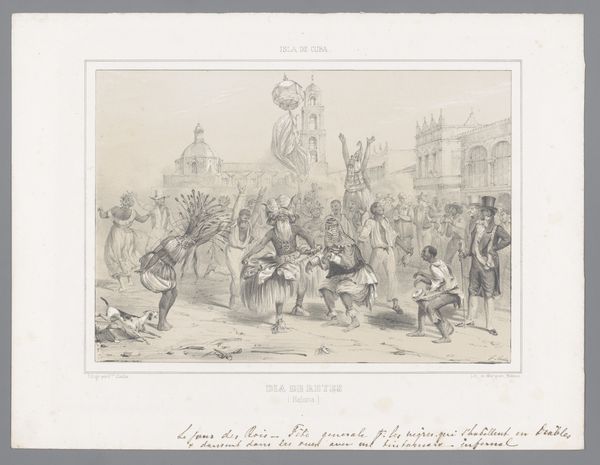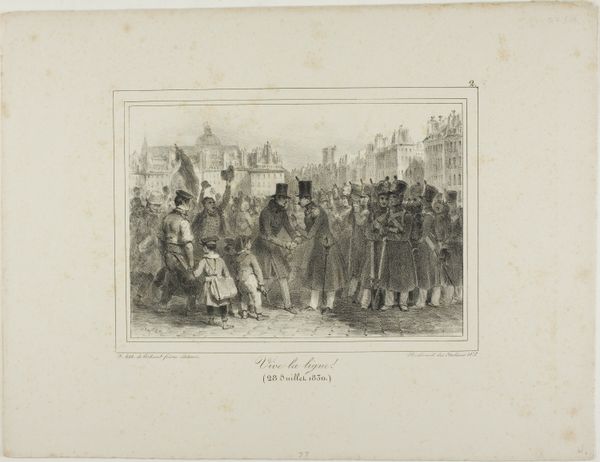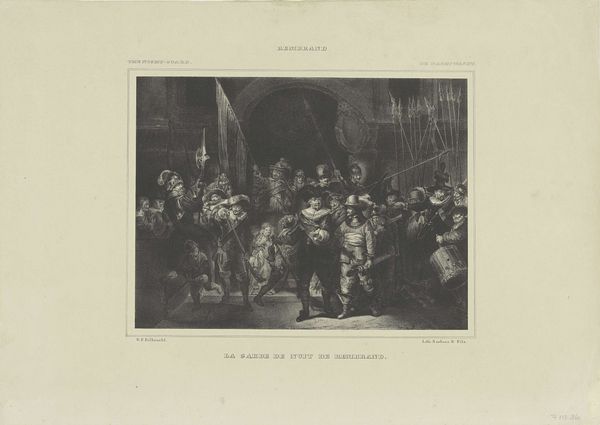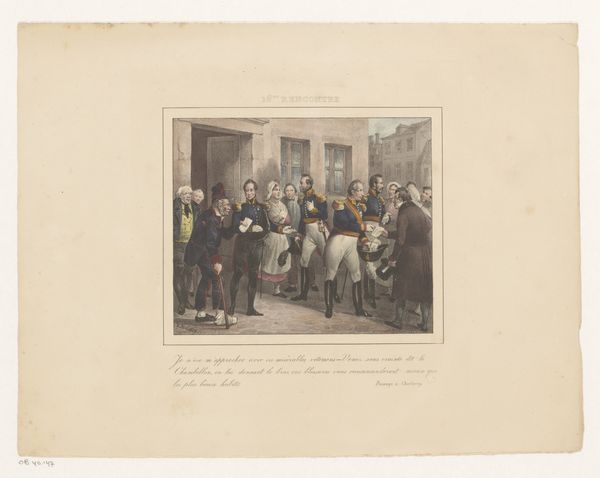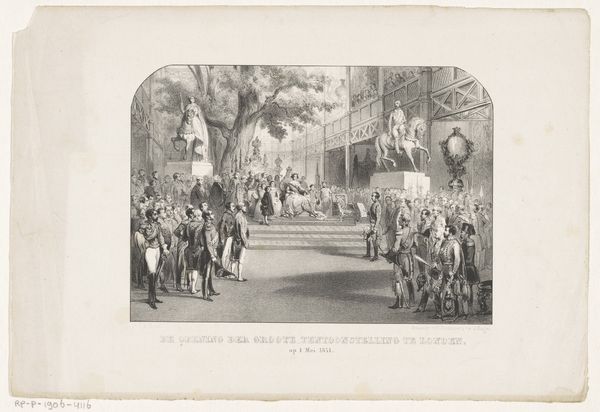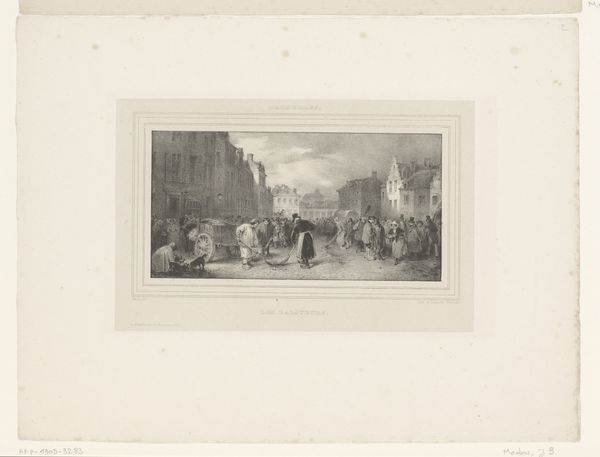
drawing, coloured-pencil, print, etching
#
portrait
#
drawing
#
coloured-pencil
# print
#
etching
#
coloured pencil
#
watercolour illustration
#
genre-painting
#
watercolor
Dimensions: height 498 mm, width 660 mm
Copyright: Rijks Museum: Open Domain
Editor: Here we have "Utrechtse Maskerade van 1856, plaat 3," created in 1856 by an anonymous artist. It’s a print that uses etching and coloured pencil, held here at the Rijksmuseum. I’m struck by the rigid formality of the figures on the left contrasted with the pageantry on the right. What do you see in this piece? Curator: I see a performance, a staged tableau, pregnant with meaning beyond its immediate depiction. Look at the visual vocabulary, the distinct costuming, separating one group from another. This isn't simply a street scene, it's a deliberate arrangement meant to evoke something… but what? Editor: Perhaps the outfits are meant to show some type of hierarchy? Curator: Precisely! Notice the somber dress of the figures on the left in contrast to the colorfully adorned figures to the right. Could these contrasts represent a cultural memory, maybe of civic duty and military pride, meant to be activated within the viewer? What emotions do the colors themselves evoke within you? Editor: The darker tones on the left feel more serious, like a formal procession. The bright colors to the right, especially with the musical instruments, have a celebratory air, a little chaotic even. Curator: Exactly! And note how the artist utilizes color to direct our eye. What purpose does that disjunction serve in the context of a “masquerade?” The artist presents a deliberate staging of collective memory, a visual language intended to stir deep seated associations about societal order and perhaps even power. Does it make you consider your place within a larger narrative? Editor: It definitely makes me wonder about the different roles people play in society, and how those roles are visualized. I’d never considered how an image like this could be a kind of cultural archive! Curator: Indeed. These images offer enduring ways to keep traditions and cultural assumptions alive, so we would do well to continue studying them.
Comments
No comments
Be the first to comment and join the conversation on the ultimate creative platform.
